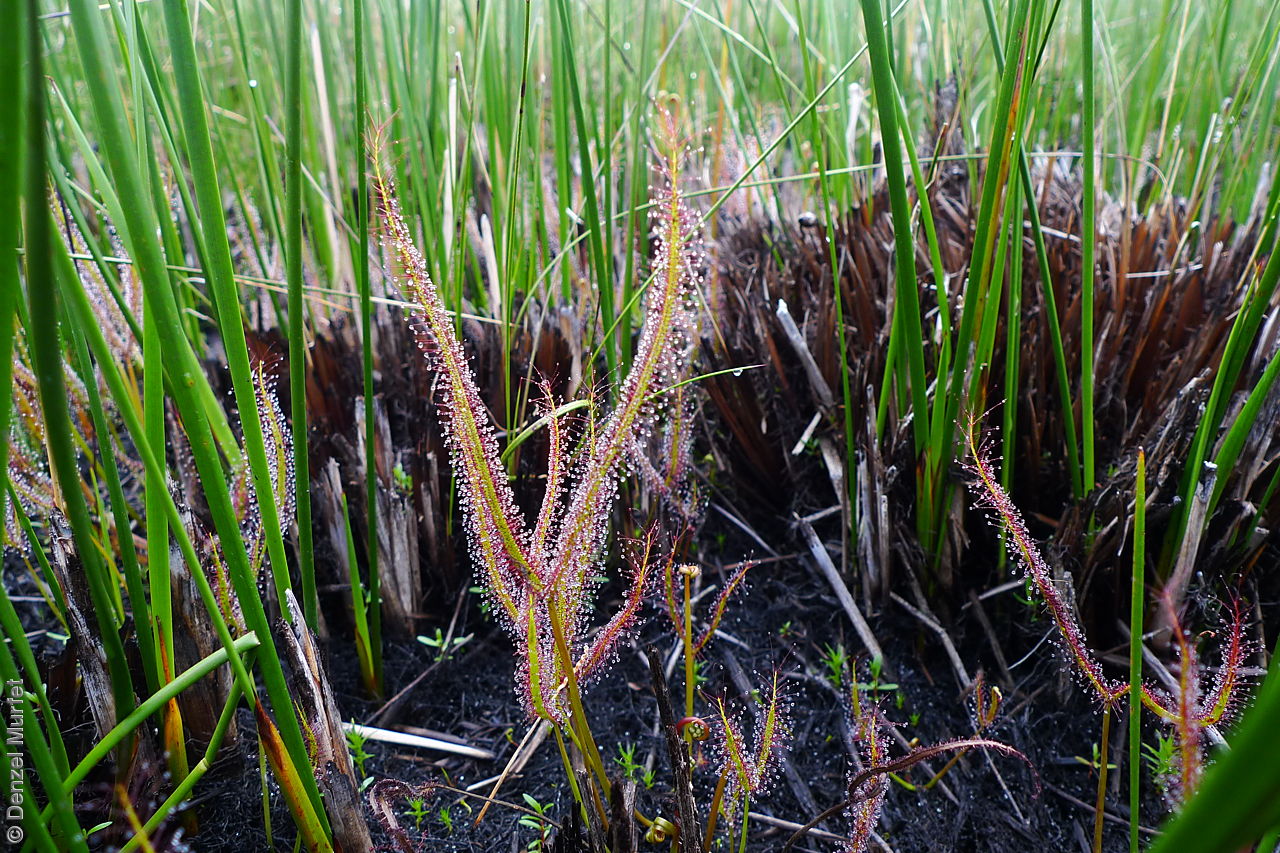
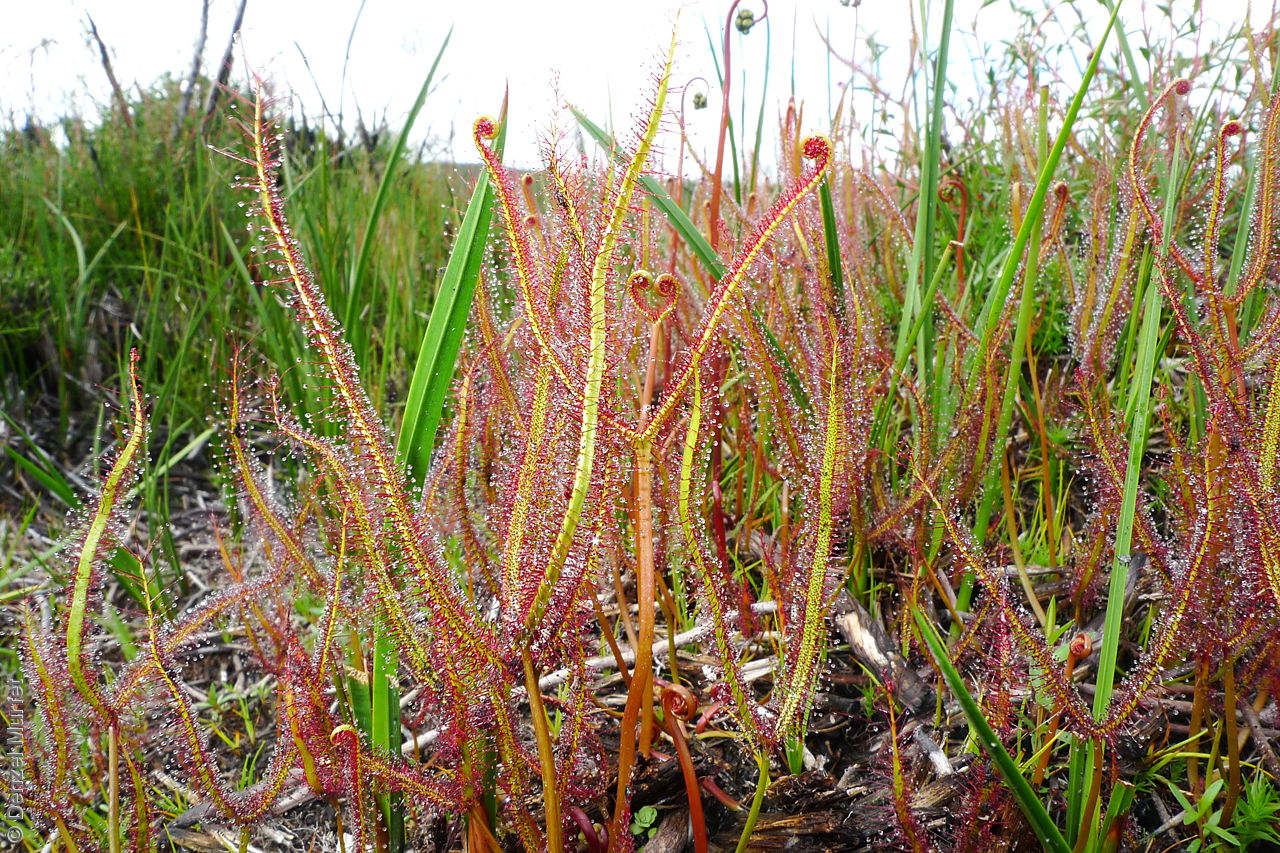
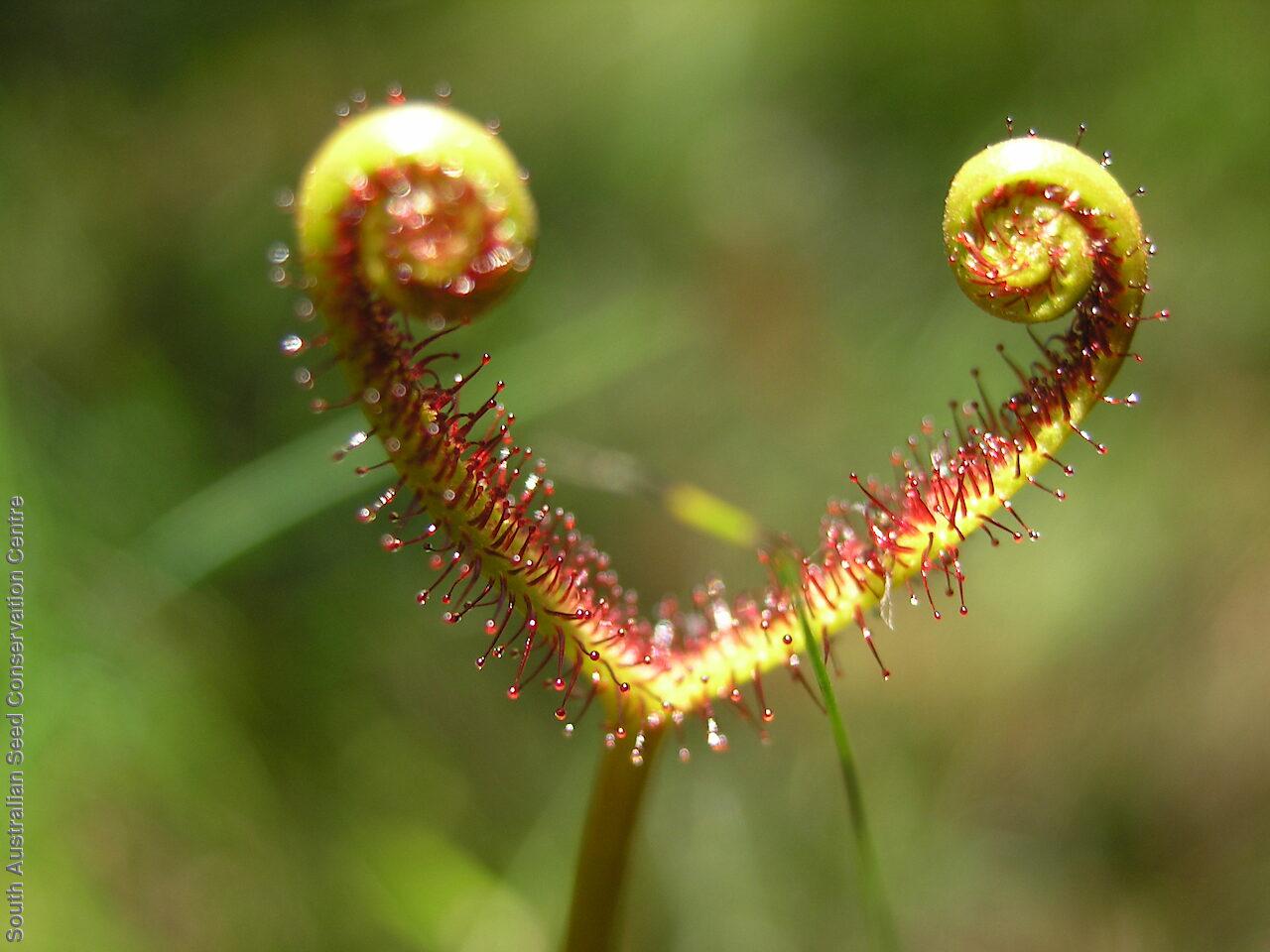
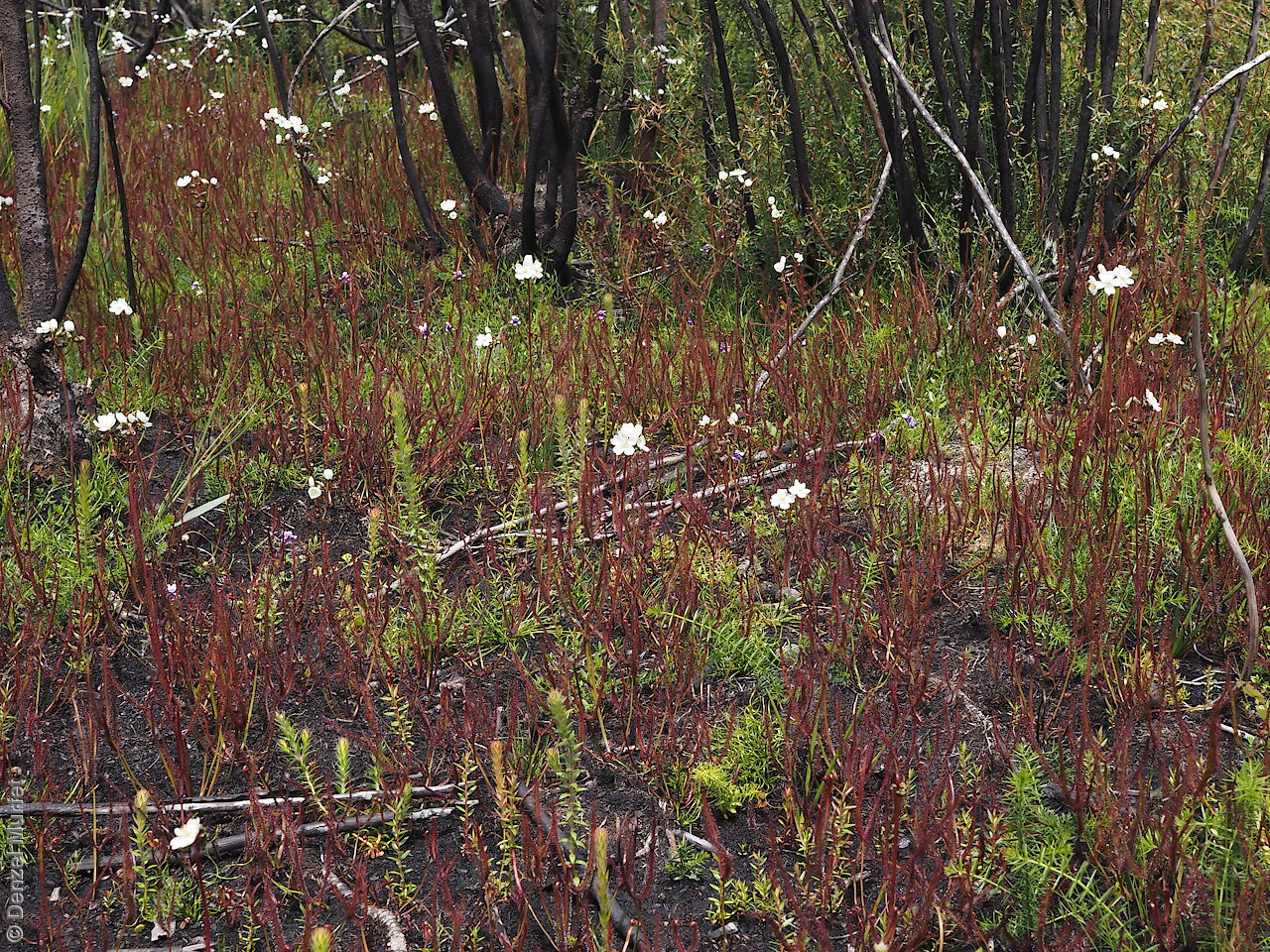
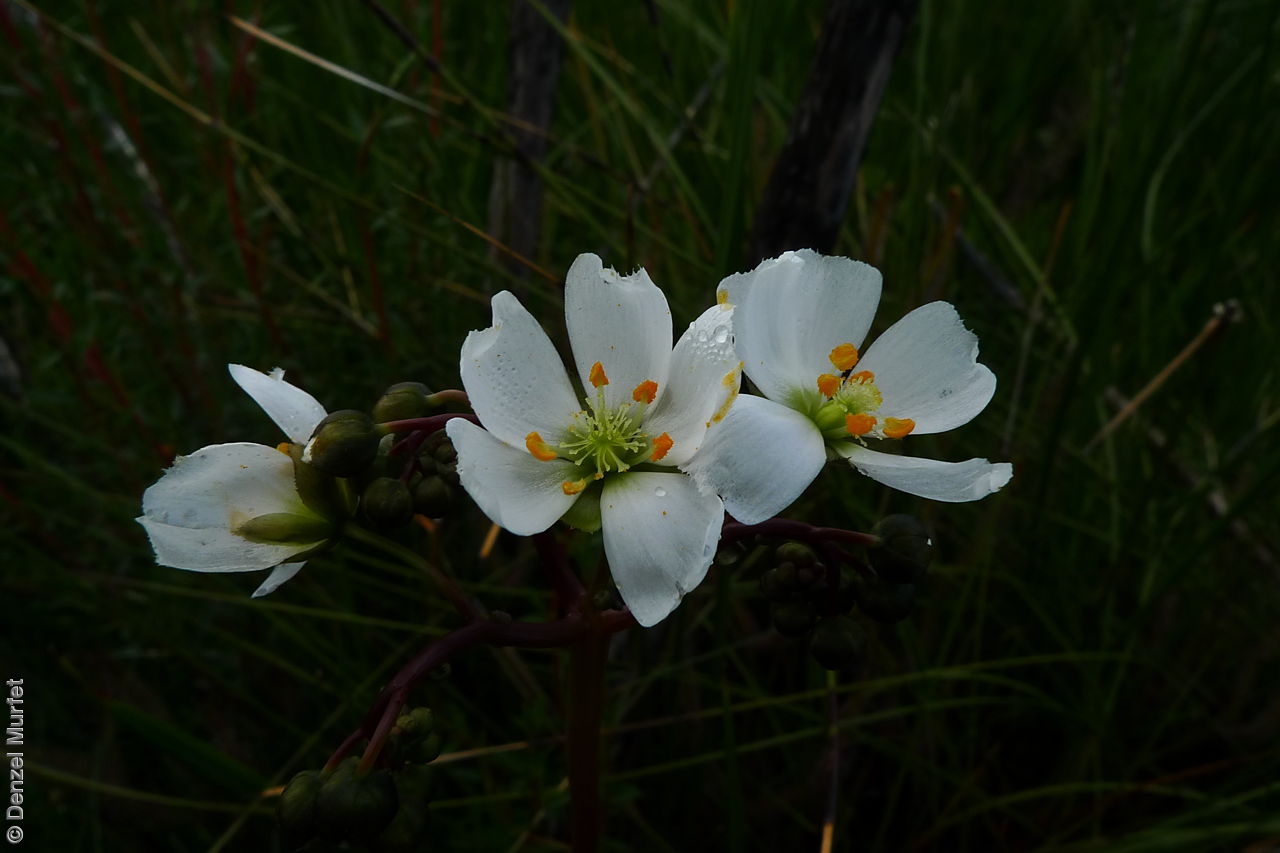
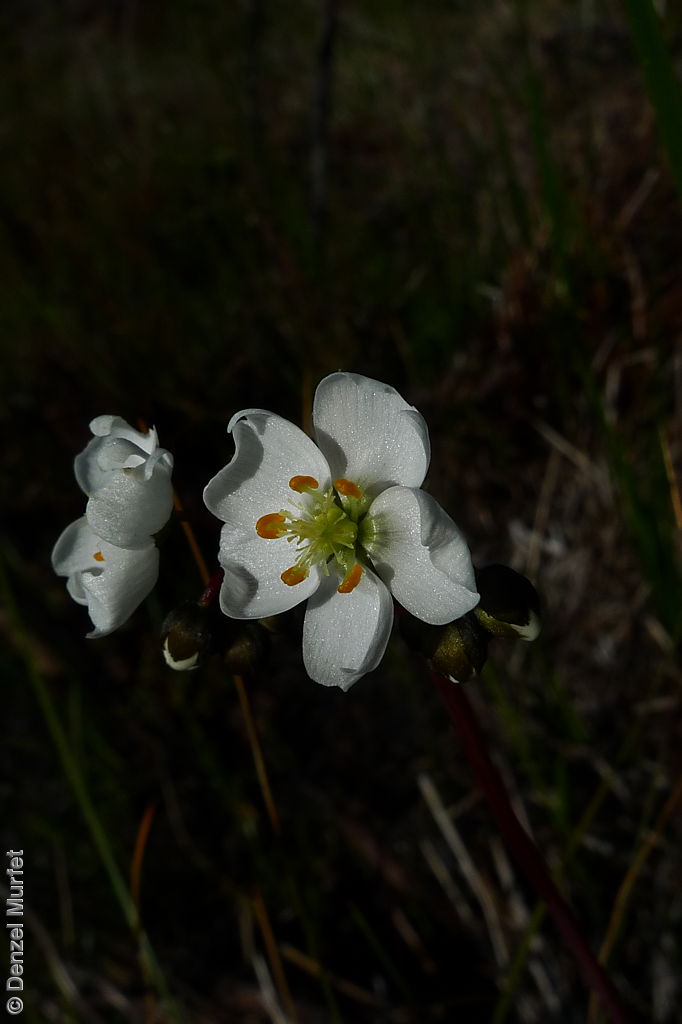
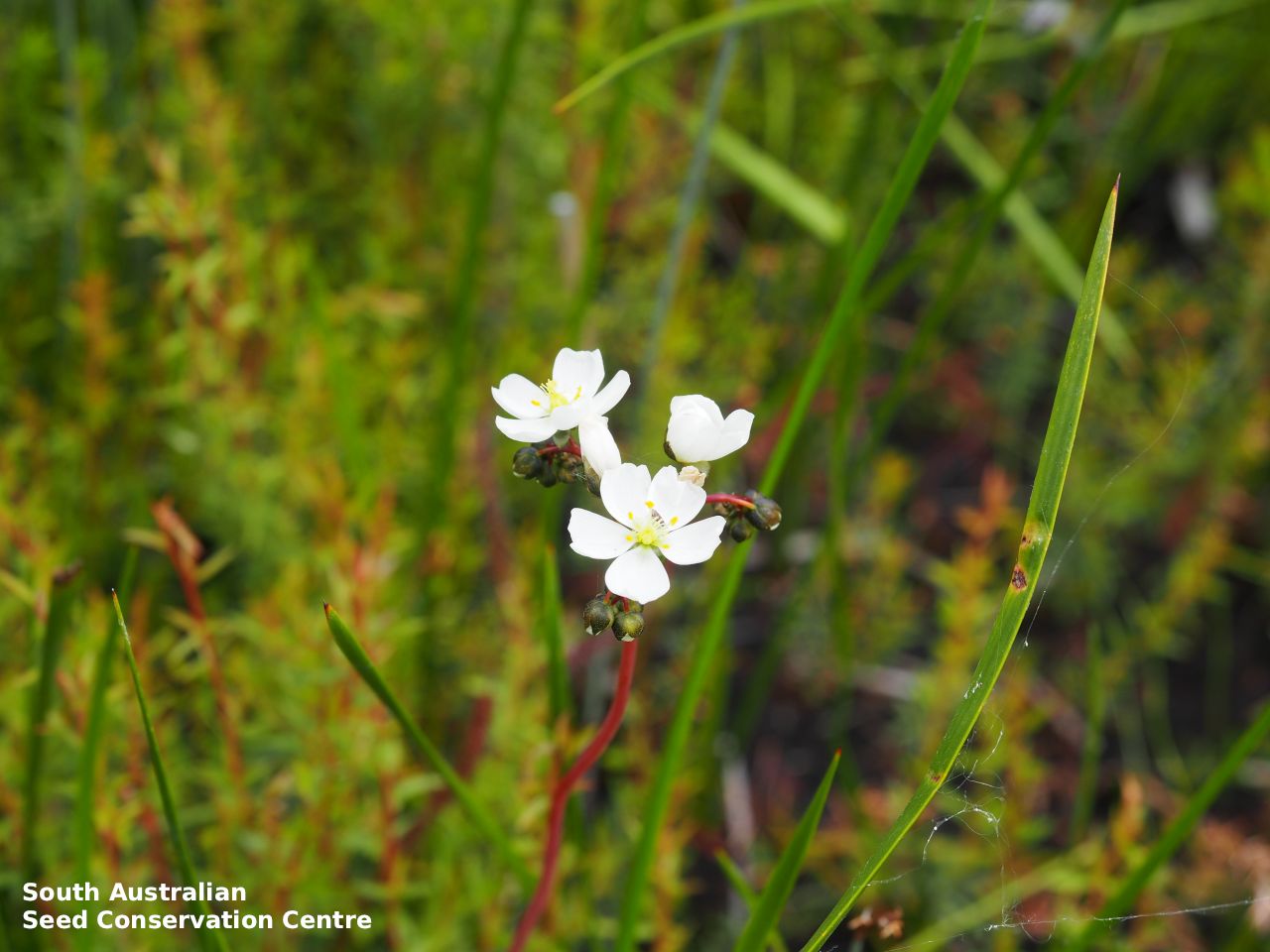
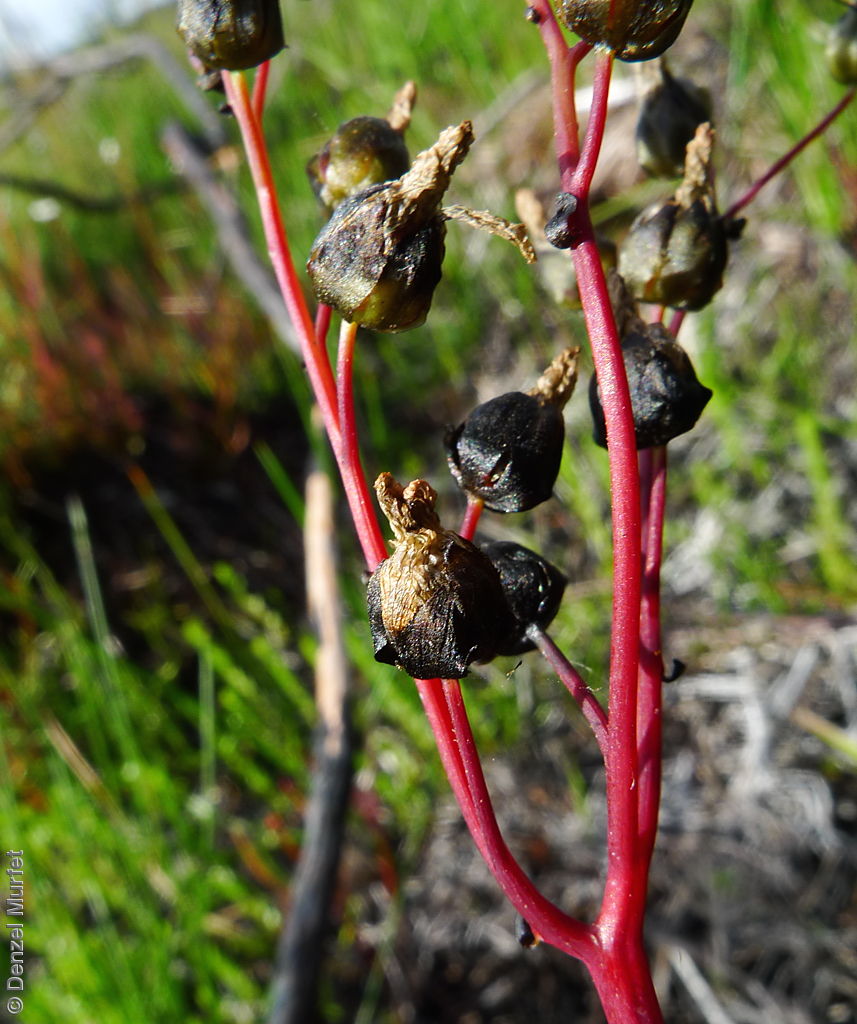
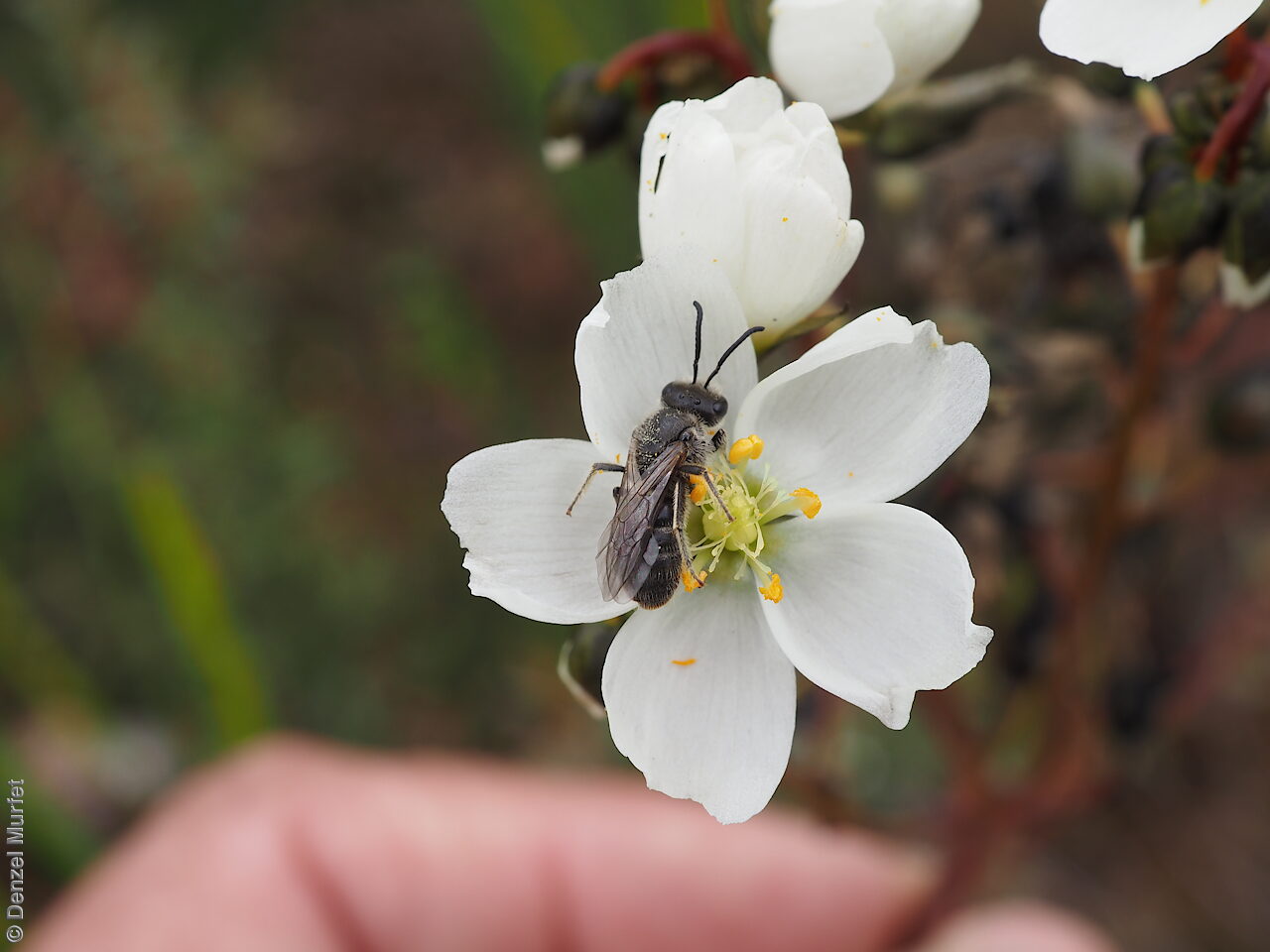
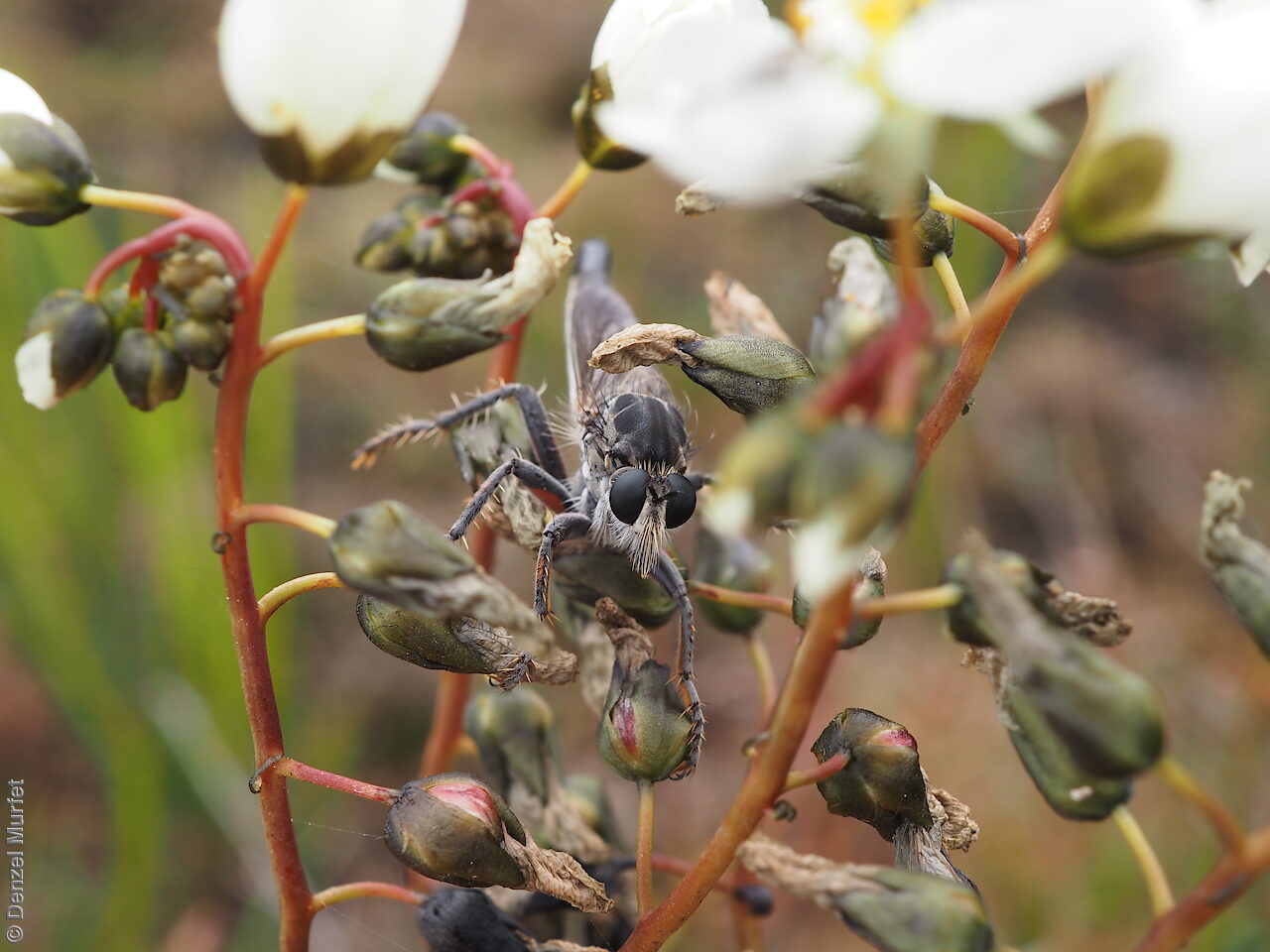
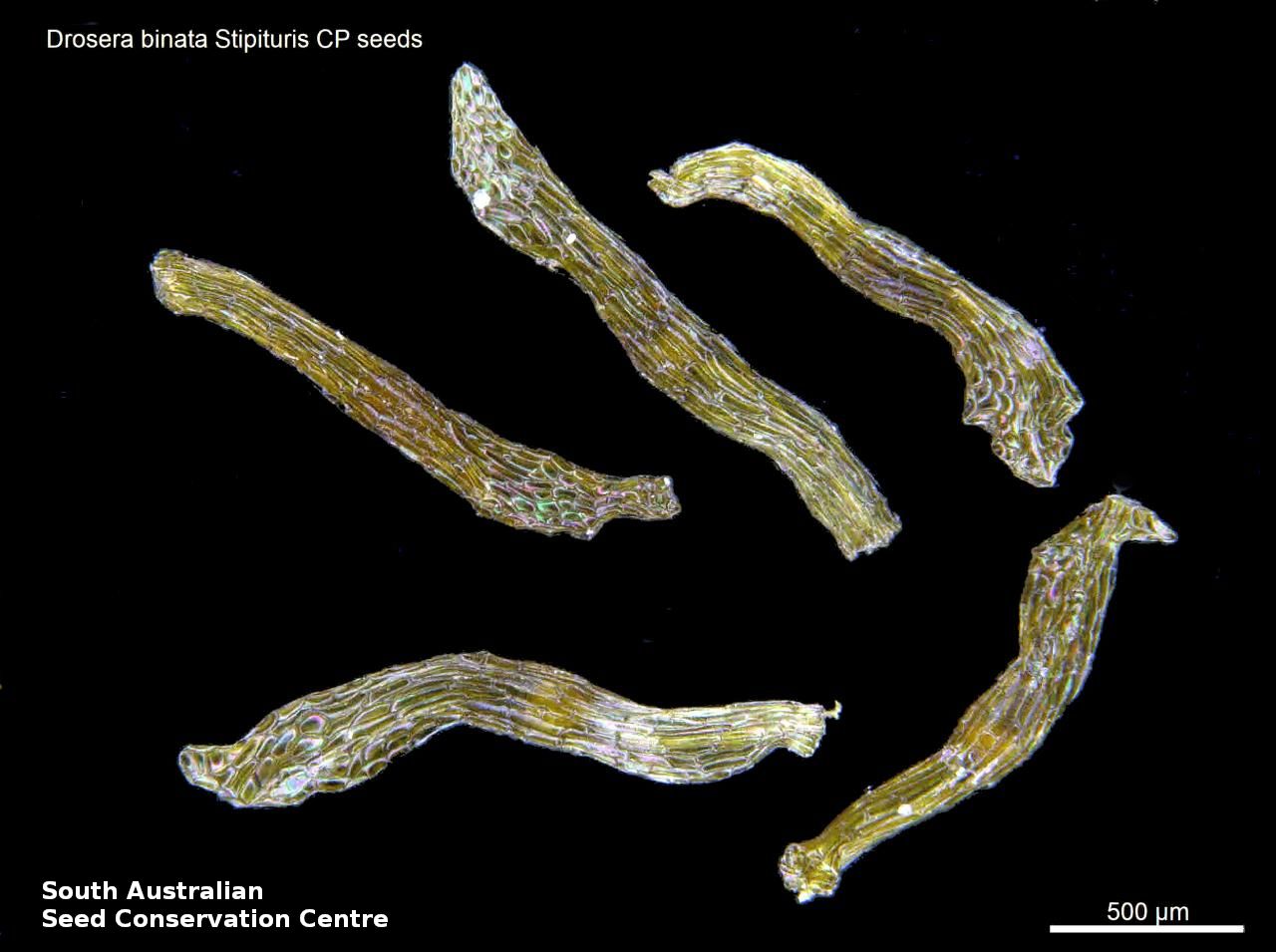
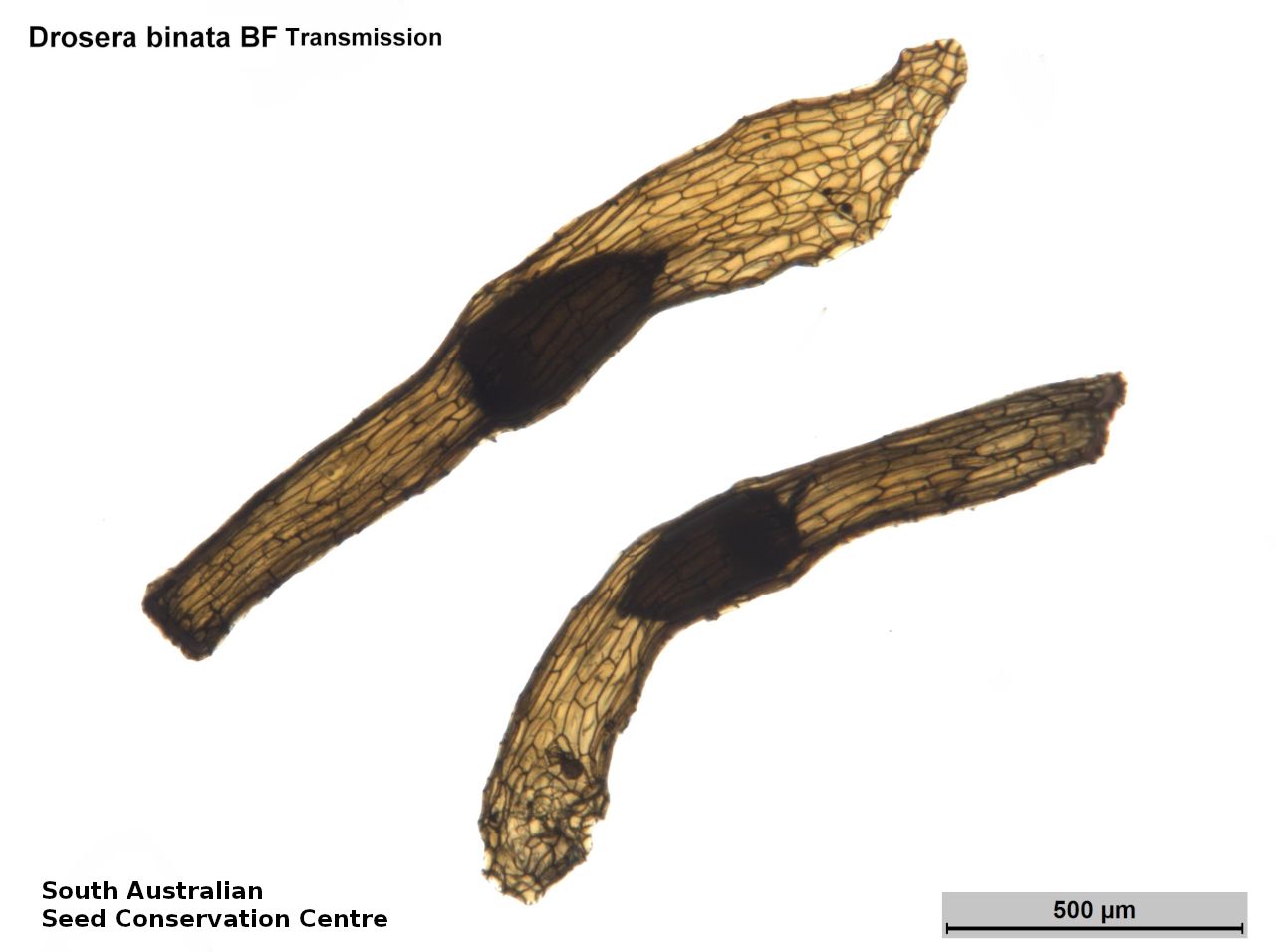
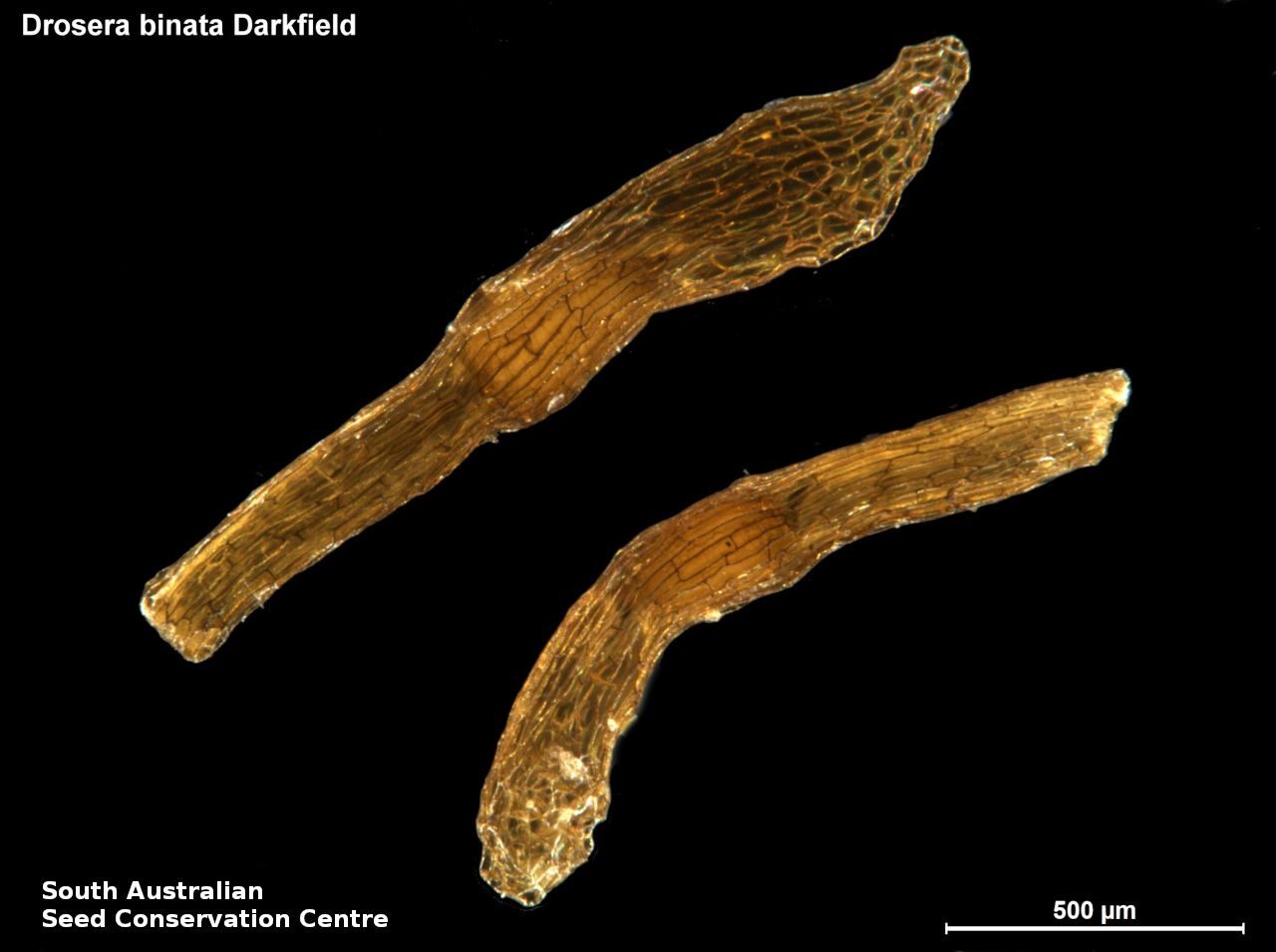
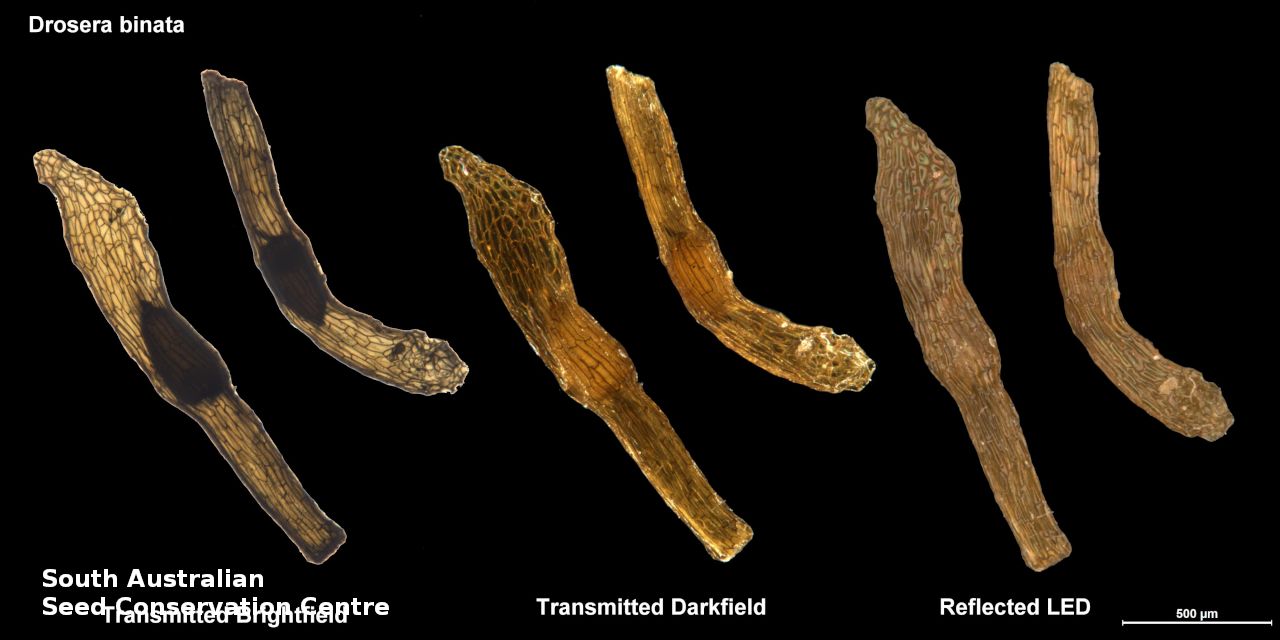
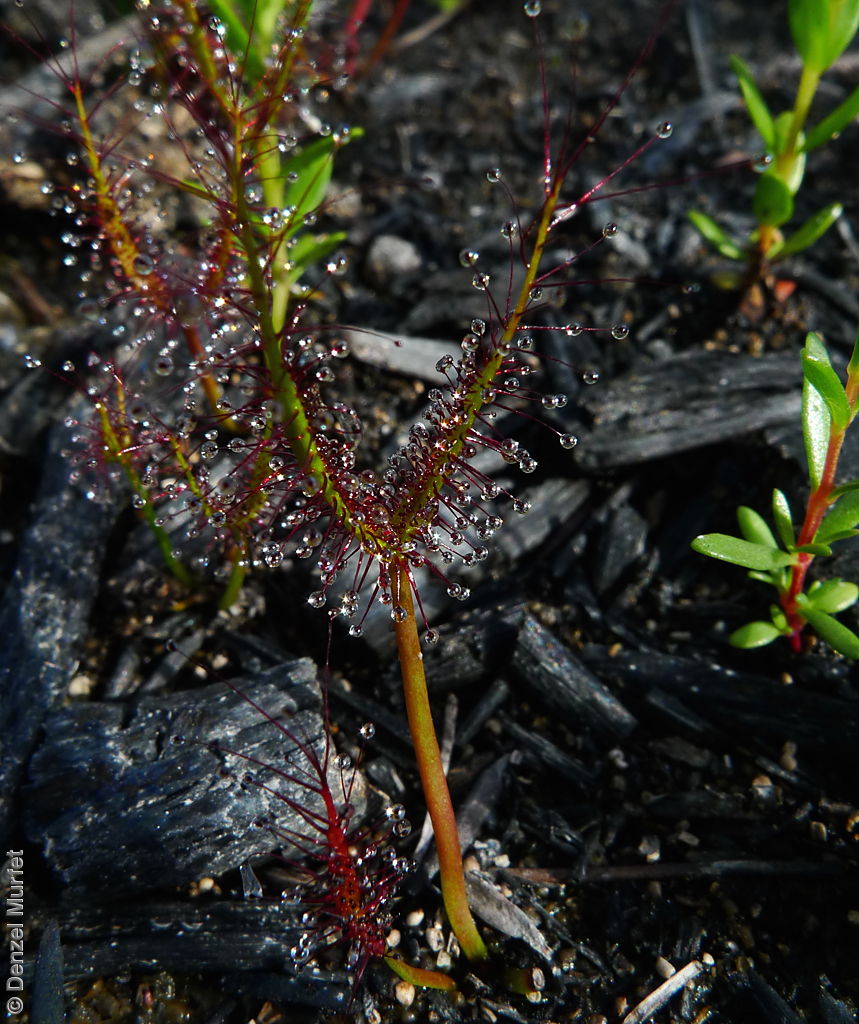


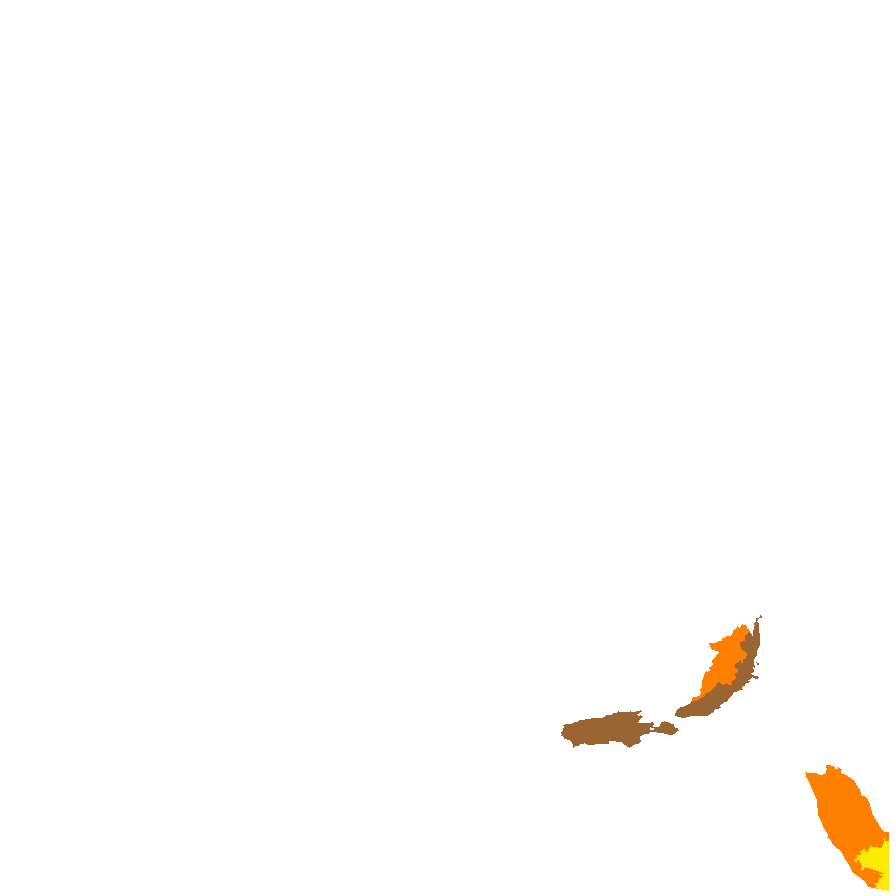
Botanical art
Etymology
Drosera from the Greek 'droseros' meaning dewy, alluding to the glistening of the glandular leaf laminae. Binata meaning paired, referring to the forked leaves.
Distribution and status
Found in the southern Mount Lofty Ranges, on the western end on Kangaroo Island and in the lower South-east in South Australia, growing in wet sand and sandy peat in swamps, on creek banks and seepage lines in rock-faces. Also found in Western Australia, Queensland, New South Wales, Victoria and Tasmania. Native. Uncommon in South Australia. Rare in Western Australia. Common in the other States.
Herbarium regions: Southern Lofty, Kangaroo Island, South Eastern, Green Adelaide
NRM regions: Adelaide and Mount Lofty Ranges, Kangaroo Island, South East
AVH map: SA distribution map (external link)
Plant description
Small herb with stems very short and stolons often present. Leaves radical, erect, usually forked once, lobes linear to 10 cm long, with glandular hairs on their upper surfaces, coiled when young, petiole slender to 30 cm long, stipules membranous to 5 mm long. Inflorescence 1 or 2, to 50 cm long, glabrous, branched with 15-30 white flowers. Flowering between December and April. Fruits are black-brown ovoid capsule to 5 mm long. Seeds are pale-brown linear to narrowly oblong seed to 2 mm long and 0.5 mm wide, with a mesh-like surface.
Seed collection and propagation
Collect seeds between November and February. Collect mature capsules, those that are fat, hard, turning brown-black and contain brown seeds inside. Place the capsules in a tray and leave to dry for one to two weeks. Then rub the capsules gently by hand to dislodge the seeds. Use a sieve to separate the unwanted material. Store the seeds with a desiccant such as dried silica beads or dry rice, in an air tight container in a cool and dry place. From one collection, the seed viability was high, at 90%.
| Location | No. of seeds (weight grams) | Number of plants | Date collected | Collection number Collection location | Date stored | % Viability | Storage temperature |
|---|---|---|---|---|---|---|---|
| BGA | 329,400 (2.9 g) | 100+ | 8-Jan-2019 | TST1407 Southern Lofty | 24-Apr-2019 | 95% | -18°C, -80°C |
| BGA | 90,000 (1.620 g) | 100 | 12-Jan-2021 | DJD3982 Kangaroo Island | 28-Jun-2021 | 95% | -18°C, -80°C |
Number of plants: This is the number of plants from which the seeds were collected.
Collection location: The Herbarium of South Australia's region name.
% Viability: Percentage of filled healthy seeds determined by a cut test or x-ray.